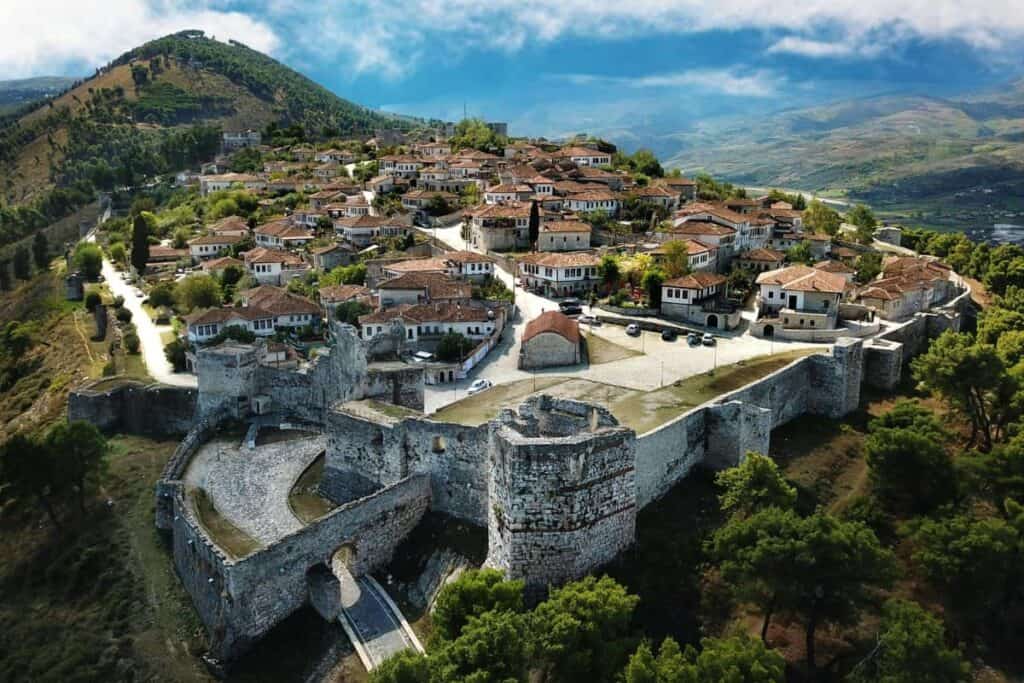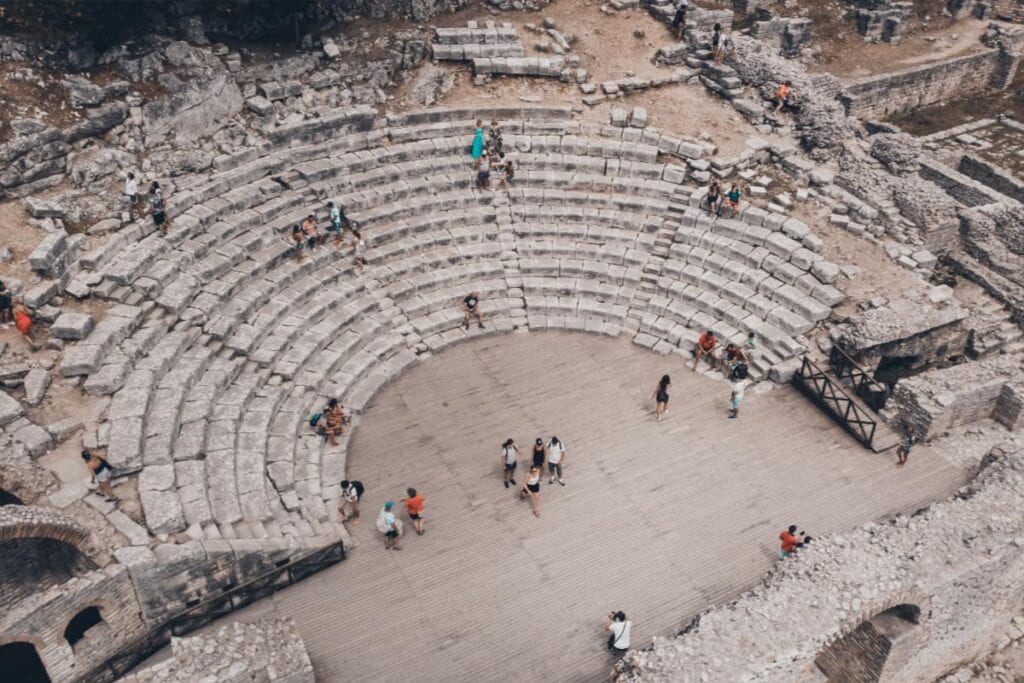Discovering Albania’s Sacred Landmarks
Albania’s unique history of religious coexistence has left a rich tapestry of spiritual and cultural landmarks. From ancient monasteries to historic mosques, these sites offer insight into the country’s diverse religious heritage.
- The Lead Mosque, Shkodër
What to See:
Built in the 18th century, this mosque features stunning Ottoman architecture, with elegant domes and arches.
The serene surroundings of Lake Shkodër add to the peaceful atmosphere.
Why It’s Special: The Lead Mosque symbolizes Albania’s long history of religious harmony and is a spiritual centerpiece of Shkodër.
Tip: Visit early in the morning for a quiet, reflective experience.
- The Monastery of Ardenica
What to Explore:
The frescoes were created by renowned 18th-century Albanian artists, showcasing intricate religious scenes.
The ancient library is home to historical manuscripts and texts.
Why It’s Unique: This monastery is said to be the site where Skanderbeg’s marriage was blessed, tying it to Albania’s national hero.
Tip: Dress modestly and take a guided tour to fully appreciate the history and art.
- Ethem Bey Mosque, Tirana
What to Discover:
The interior of the mosque, adorned with hand-painted floral and geometric designs, is a masterpiece of Islamic art.
Its location in Skanderbeg Square makes it easily accessible and a key cultural landmark.
Why It’s Significant: Built in the early 19th century, the mosque is one of the few to survive Albania’s communist regime intact.
Tip: Combine your visit with a stop at the nearby Clock Tower of Tirana for panoramic views.
- St. Mary’s Monastery, Apollonia
What to Explore:
The Byzantine church within the monastery complex, features ancient stone carvings.
Views of the surrounding Apollonia ruins, which add historical depth to the visit.
Why It’s Special: This monastery is an important religious site tied to the ancient city of Apollonia, blending history with spirituality.
Tip: Visit during the spring for blooming wildflowers that enhance the site’s natural beauty.
- The Tekke of Melan, Gjirokastër
What to Discover:
A spiritual center for the Bektashi Sufi order, showcasing Albania’s unique religious diversity.
The simple yet profound architecture reflects the Bektashi principles of tolerance and inclusivity.
Why It’s Unique: The tekke offers a peaceful retreat and insight into the Bektashi faith, a significant part of Albania’s spiritual fabric.
Tip: Speak with local caretakers to learn more about the rituals and traditions practiced here.
- The Cathedral of Saint Stephen, Shkodër
What to See:
The neo-Gothic architecture, features soaring spires and detailed stained-glass windows.
The beautifully landscaped gardens surround the cathedral.
Why It’s Worth Visiting: As one of Albania’s largest Catholic cathedrals, it highlights the significant Catholic community in the north.
Tip: Check for concert schedules, as the cathedral occasionally hosts live classical music performances.
- The Mosque of Berat
What to Explore:
The King Mosque, was built in the 15th century, with its elegant wooden interior.
The nearby Helveti Tekke, a Sufi shrine offering insight into Berat’s spiritual life.
Why It’s Significant: These sites are part of Berat’s UNESCO designation, reflecting the city’s rich Ottoman and Islamic heritage.
Tip: Visit the mosque and tekke as part of a walking tour of Berat’s Mangalem district.
- The Orthodox Church of the Dormition of the Theotokos, Voskopoja
What to Discover:
Frescoes depicting religious scenes, painted by master artists of the 18th century.
The serene setting of Voskopoja, once a major center of Orthodox Christianity in the Balkans.
Why It’s Special: The church represents the cultural and spiritual legacy of Voskopoja during its golden age.
Tip: Bring a camera to capture the stunning artistry of the frescoes.
- Halveti Tekke, Prizren
What to Explore:
The well-preserved prayer halls and chambers used by the Halveti Sufi order.
The tekke’s rich history, connected Albania to the broader spiritual movements of the Ottoman Empire.
Why It’s Unique: It’s a quieter, more intimate spiritual site, perfect for learning about Albania’s mystical traditions.
Tip: Pair this visit with a stroll through the charming streets of Prizren.
- The Church of St. Anthony, Laç
What to See:
A popular pilgrimage site, especially on June 13th, the feast day of St. Anthony.
The stunning hillside location, offers panoramic views of the surrounding landscape.
Why It’s Inspiring: Known for its miraculous legends, this church attracts visitors seeking spiritual healing and peace.
Tip: If visiting during the feast day, prepare for crowds and vibrant festivities.
Tips for Visiting Albania’s Religious Sites
Dress Modestly: Wear clothing that covers your shoulders and knees when visiting religious landmarks.
Learn the History: Engage a guide or research beforehand to fully appreciate each site’s significance.
Respect Traditions: Follow local customs, such as removing shoes before entering mosques.


